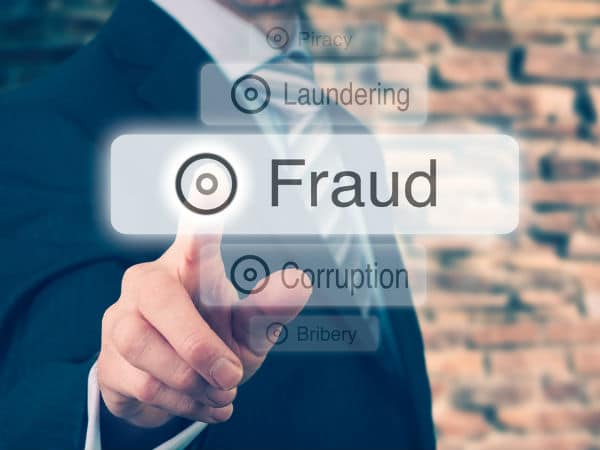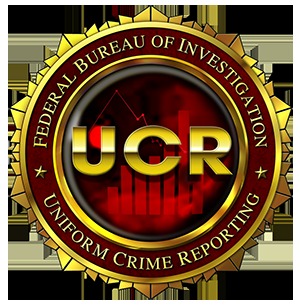Edward Carlos St. Mary III Indicted in Alleged Multi-Million Dollar Wire Fraud Scheme Targeting International Diamond Market
NEW YORK, NY – October 26, 2023 – A significant federal indictment was unsealed today by the U.S. Attorney’s Office for the Southern District of New York, charging prominent international businessman Edward Carlos St. Mary III with multiple counts of wire fraud. The charges, brought under 18 U.S.C. § 1343, allege a complex scheme that defrauded investors and legitimate businesses within the international diamond trade of over $50 million. This case casts a harsh spotlight on the vulnerabilities within high-value global markets and the sophisticated methods allegedly employed to exploit them.
The indictment outlines a meticulously planned operation purportedly masterminded by St. Mary III, spanning from 2018 to 2023. During this period, St. Mary III is accused of establishing a network of shell corporations and systematically falsifying crucial financial documents, including statements, contracts, and even Kimberley Process Certificates. These fabricated documents were allegedly used to solicit substantial investments for purported consignments of high-grade rough diamonds, claimed to be sourced from conflict-free zones. The prosecution contends these diamond consignments were either entirely fictitious or their value was grossly inflated to deceive investors.
Central to the federal charges is the alleged pervasive use of interstate and international wire communications. St. Mary III and his unnamed associates are accused of utilizing encrypted emails, secure messaging applications, and international bank wire transfers to communicate with their alleged victims, disseminate fraudulent documentation, and transfer the illicitly obtained proceeds across multiple borders. These actions are what bring the alleged scheme under the purview of federal wire fraud statutes. The unsealing of the indictment follows a multi-year investigation reportedly spearheaded by the Federal Bureau of Investigation (FBI), with substantial support from IRS Criminal Investigation (IRS-CI) and collaborative efforts with international law enforcement agencies, underscoring the global reach of the alleged criminal activities.
The victims of this alleged fraud are diverse, reportedly ranging from sophisticated institutional investment funds to established diamond wholesalers. These entities were allegedly lured by St. Mary III’s elaborate presentations, promises of extraordinary returns, and the veneer of legitimacy created by the falsified documents. The case highlights the potential for devastating financial losses and the significant erosion of trust that such schemes can inflict upon specialized global markets. The announcement of a high-profile indictment of this nature serves not only as a declaration of enforcement action but also as a critical instrument for public education and deterrence. It signals the extensive capabilities and international reach of federal investigators, sending a clear message that complex, cross-border financial crimes are actively pursued and prosecuted.
Understanding Wire Fraud – The Legal Framework of the Charges Against St. Mary III
The federal wire fraud statute, codified under 18 U.S.C. § 1343, forms the legal backbone of the charges leveled against Edward Carlos St. Mary III. This statute criminalizes the use of interstate or foreign wire communications—a broad category encompassing internet traffic, telephone calls, radio, television, and other electronic transmissions—in the execution of any scheme or artifice designed to defraud victims of money or property. The U.S. Department of Justice outlines four essential elements that prosecutors must prove to secure a conviction for wire fraud: (1) that the defendant voluntarily and intentionally devised or participated in a scheme to defraud another out of money; (2) that the defendant did so with the intent to defraud; (3) that it was reasonably foreseeable that interstate wire communications would be used to execute the scheme; and (4) that the scheme resulted in, or would result in, the loss of money or property.
To successfully prosecute Mr. St. Mary III, the government must establish each of these elements beyond a reasonable doubt. This involves demonstrating:
- A Scheme to Defraud: This goes beyond simple falsehoods. It encompasses any plan or course of action intended to deceive others, including deceptive half-truths, material omissions of fact, and false promises made to induce victims to part with their assets. The alleged creation of shell companies and falsification of financial and diamond certification documents by St. Mary III’s operation would constitute such a scheme.
- Intent to Defraud (Mens Rea): This is a critical element focusing on the defendant’s state of mind. Prosecutors must prove that the accused acted knowingly and with the specific purpose of deceiving the victims. It is insufficient to show that a business venture merely failed or that statements made were inaccurate; the evidence must point to a deliberate intent to cheat or deceive.
- Materiality of Misrepresentations: The false statements, promises, or omissions must be material. This means they must be of a nature that would likely influence a reasonable person’s decision-making process, such as the decision to invest funds or extend credit.
- Use of Interstate or Foreign Wires: This element provides the basis for federal jurisdiction. In today’s interconnected world, this is often readily established. The use of email for sending falsified contracts, or international wire transfers for moving funds, as alleged in the St. Mary III case, squarely meets this criterion. Each such use of wire communication in furtherance of the fraudulent scheme can be charged as a separate count of wire fraud, potentially leading to a lengthy indictment and severe cumulative penalties.
The expansive interpretation of “interstate wire communications” in the digital age has granted federal prosecutors significant jurisdictional power. This allows them to address a wide array of fraudulent activities that might otherwise be challenging for local authorities to prosecute, particularly when schemes span multiple states or international borders, as is alleged in the St. Mary III case. The ability to leverage this broad jurisdiction is a powerful tool in combating sophisticated, modern financial crime.
Conviction for federal wire fraud carries severe penalties, reflecting the serious nature of the offense. It is a felony, and the consequences can be life-altering.
Potential Penalties for Federal Wire Fraud (18 U.S.C. § 1343)
| Scenario | Maximum Imprisonment (per count) | Maximum Fine (Individual, per count) | Maximum Fine (Organization, per count) |
|---|---|---|---|
| Standard Violation (e.g., general commercial fraud) | 20 years | $250,000 | $500,000 |
| Violation Affecting a Financial Institution | 30 years | $1,000,000 | $1,000,000 |
| Violation Involving Federal Disaster Relief | 30 years | $1,000,000 | $1,000,000 |
Export to Sheets
Data Sources:
These penalties can be applied for each count of wire fraud for which a defendant is convicted. Thus, for an individual like St. Mary III facing multiple counts, the potential cumulative sentence can be exceptionally long, and fines can reach astronomical figures. The enhanced penalties for wire fraud that affects a financial institution or involves federal disaster relief reflect a clear legislative and societal judgment: crimes that target or undermine critical financial infrastructure or exploit vulnerable populations during emergencies inflict a broader, more systemic harm and erode public trust to a greater degree. Consequently, such actions warrant more severe punishment, serving as both a stronger deterrent and a reflection of the heightened societal impact. The “per count” nature of these penalties also provides prosecutors with considerable leverage during plea negotiations and accurately reflects the often ongoing, repetitive nature of sophisticated fraudulent schemes.
The Alleged Nexus – Exploiting the New York Diamond District’s Unique Ecosystem
The indictment against Edward Carlos St. Mary III suggests that his alleged fraudulent scheme may have strategically targeted or operated within the unique environment of the New York Diamond District. Located primarily on 47th Street between Fifth and Sixth Avenues, this area is far more than a mere collection of jewelry stores; it is a dense, dynamic economic and cultural ecosystem with a global reach. Understanding this environment is key to appreciating how it might be vulnerable to sophisticated fraudulent actors.
The NYC Diamond District is an undisputed economic powerhouse. It is estimated that over 90% of all diamonds entering the United States pass through New York City, with the majority being handled in some fashion within the District. The area hosts over 2,600 independent businesses, employing approximately 33,000 people, and facilitates nearly $25 billion in annual trade. This sheer concentration of financial activity and high-value commodities inherently makes it an attractive target for those with illicit intentions.
Operationally, the District presents a bifurcated structure. Street-level exchanges and retail storefronts cater to public consumers, often characterized by aggressive sales tactics and a “buyer beware” atmosphere. However, a significant portion of the District’s multi-billion dollar commerce, particularly large B2B transactions and dealings in rough diamonds, occurs in high-rise offices above street level. These deals are often conducted by appointment, frequently requiring introductions through respected industry colleagues, and operate within a more insular professional network.
The District also possesses a rich historical and cultural fabric. Its prominence grew significantly during World War II as European diamond merchants, particularly Jewish dealers from Antwerp and Tel Aviv, sought refuge in New York. This influx cemented traditions of trust and personal relationships, where multi-million dollar deals involving valuable parcels of diamonds could be sealed with a simple handshake and the Hebrew blessing “mazal u bracha” (luck and blessing), often without extensive written contracts or immediate legal recourse. The enduring presence of specific ethnic communities, predominantly Hassidic Jews, Russians, and Indians, and the use of industry-specific jargon, including Yiddish terms, further define its unique character. This deeply ingrained culture of trust, while a cornerstone of the District’s historical success, can paradoxically become a significant vulnerability. As one source notes, diamantaires often rely on credit due to the high cost of stones, exposing sellers to risk, and traditional dealings may lack formal legal recourse. Sophisticated fraudsters, adept at feigning legitimacy and mimicking established norms, can exploit this reliance on reputation and personal assurances.
This unique blend of traditional, relationship-based commerce operating within the high-stakes global financial system creates a potential cultural dissonance. An operator like St. Mary III could, hypothetically, present a facade of adhering to the District’s old-world trust while simultaneously employing modern financial deception techniques—such as shell corporations, digitally forged documents, and complex international wire transfers—thereby exploiting the gap between these operational philosophies.
The international diamond trade, centered in hubs like New York, presents several inherent vulnerabilities that can be primed for exploitation:
- Opacity and Information Asymmetry: The valuation of diamonds, particularly rough or rare stones, can be subjective and complex, creating information asymmetry between experts and non-experts. This opacity can be manipulated to misrepresent value or conceal the true nature of transactions.
- High Value, Easy Portability: Diamonds concentrate immense monetary value into small, easily transportable items, making them an attractive medium for moving illicit wealth or representing fictitious assets in fraudulent schemes.
- Global and Complex Nature: The diamond pipeline is inherently transnational, involving numerous intermediaries and jurisdictions. This complexity can be exploited to create convoluted transaction chains that are difficult to trace and can obscure the ultimate beneficiaries of fraudulent activities.
St. Mary III’s alleged strategy may have involved leveraging these specific vulnerabilities. For instance, he might have exploited the trust-based credit systems prevalent in parts of the trade, used the opacity in valuation to support grossly inflated figures in investment materials, or utilized the international character of the District to route funds through a labyrinth of offshore accounts, making them difficult for authorities and victims to track. The sheer concentration of wealth and high-value transactions within such a compact geographical area naturally acts as a magnet for criminal enterprises. The potential rewards from a successful large-scale fraud in this environment are significantly amplified compared to many other sectors, making it a high-priority target for sophisticated financial criminals.
A major fraud case like the one alleged against St. Mary III, if proven, has the potential to inflict considerable reputational damage on the Diamond District. Such events can erode the foundational trust upon which much of its business is built , potentially leading to increased scrutiny from financial institutions, tighter credit conditions for legitimate businesses, and a forced re-evaluation of traditional practices that, while time-honored, may harbor exploitable weaknesses.
The Anatomy of Deception – Common Tactics in High-Value Trade Fraud
The allegations against Edward Carlos St. Mary III hint at a sophisticated understanding of how to manipulate systems governing high-value international trade. Such schemes often employ a range of deceptive tactics, some of which are particularly prevalent in industries like the diamond trade.
One common technique is Trade-Based Money Laundering (TBML). This involves misrepresenting the price, quantity, or quality of goods in commercial transactions to move value across borders illicitly. In the context of the diamond trade, this could involve over-invoicing or under-invoicing diamond shipments, or creating documentation for “phantom shipments” that never actually occur. For example, a diamond worth $50,000 might be invoiced at $100,000 to transfer an additional $50,000 in illicit funds disguised as a legitimate payment. If St. Mary III’s operation involved moving illicit proceeds or disguising the true nature of financial flows, TBML methods would be highly relevant.
Criminals also exploit the international diamond pipeline, which stretches from mines across the globe to cutting centers and finally to retail markets. This global and often fragmented supply chain offers numerous points of vulnerability:
- Use of Shell Corporations and Offshore Accounts: As allegedly employed by St. Mary III, perpetrators often create complex webs of shell companies registered in jurisdictions with lax oversight and utilize offshore bank accounts. This is done to obscure the true beneficial ownership of assets and to make the flow of illicit funds exceedingly difficult to trace.
- Falsification of Documents: A cornerstone of many large-scale frauds is the creation of counterfeit or altered documentation. This can include invoices, shipping manifests, insurance certificates, and, critically in the diamond trade, Kimberley Process Certificates. Forged KP certificates can lend a false air of legitimacy to diamonds that are either conflict-sourced (though KPCS primarily targets this) or, in a purely financial fraud, to non-existent or overvalued stones used to secure investments.
- Cross-Border Transactions: Moving diamonds or funds through multiple jurisdictions, particularly those with weaker Anti-Money Laundering and Counter-Financing of Terrorism (AML/CFT) regimes or reputations for financial secrecy, is a common tactic to launder money and evade detection.
- “Smurfing”: While perhaps less applicable to St. Mary III’s alleged large-scale scheme, this technique involves breaking down large sums of illicit cash into smaller, less conspicuous amounts to purchase high-value goods like diamonds, thereby avoiding currency transaction reporting thresholds.
The success of such schemes often relies on victims or intermediaries overlooking or dismissing critical red flags. The Financial Action Task Force (FATF) and other regulatory bodies have identified numerous indicators of suspicious activity in the diamond trade. These can include: unusual forms or methods of payment (e.g., large cash transactions where bank transfers are the norm); financial activity inconsistent with a client’s known business profile or diamond trade practices; transactions with no apparent economic rationale; diamonds purportedly originating from countries with no significant diamond production; or invoices and other commercial documents that appear unreliable, incomplete, or forged. A pattern of such red flags, if identified and acted upon, could potentially disrupt a fraudulent scheme before it causes widespread harm.
Even the secure logistics industry, which provides specialized transport and storage for high-value goods like diamonds , can be subverted. Sophisticated fraudsters might create counterfeit shipping records from reputable logistics providers, bribe personnel within these companies, or even establish fake “secure” transport or vaulting operations to deceive victims about the existence, movement, or safeguarding of the purported assets. The same technological advancements that enhance legitimate global trade and secure logistics, such as real-time tracking systems and digital documentation , can also provide tools for fraudsters. They can create more convincing forgeries of documents and online tracking portals, communicate covertly using encrypted platforms, and move illicit funds rapidly across borders, making technology a double-edged sword in the fight against financial crime.
Ultimately, sophisticated financial fraud in high-value trades often represents a convergence of various criminal methodologies. Elements of classic confidence schemes are combined with intricate corporate fraud structures, trade-based money laundering techniques, and cybercrime tactics (through the use of digital communication, forgeries, and exploitation of online systems). Despite the complexity of the financial instruments and digital systems involved, many frauds, including those in the high-value diamond trade, still fundamentally exploit human psychology. Greed, the allure of unusually high returns, misplaced trust, the fear of missing out on a lucrative opportunity, or an unwillingness to rigorously question perceived authority or overly complex propositions are often the levers that fraudsters pull to ensnare their victims.
Regulatory Shield – The Kimberley Process, AML/KYC, and Law Enforcement
In response to the risks inherent in the high-value diamond trade, a multi-layered regulatory and enforcement framework exists, though its efficacy can be challenged by sophisticated criminal enterprises.
A key international initiative is the Kimberley Process Certification Scheme (KPCS), established in 2003. Its primary objective is to prevent “conflict diamonds” (also known as “blood diamonds”)—rough diamonds used by rebel movements to finance wars against legitimate governments—from entering the legitimate international trade. Participating countries are required to implement internal controls over the import and export of rough diamonds. Shipments must be accompanied by a valid Kimberley Process Certificate, be transported in tamper-resistant containers, and meet specific data reporting requirements. In the United States, the KPCS is implemented through the Clean Diamond Trade Act, with U.S. Customs and Border Protection (CBP) responsible for enforcement at ports of entry and exit. Violations of the Act carry significant civil and criminal penalties, including fines and imprisonment.
However, it is crucial to understand the scope and limitations of the KPCS. While it has been instrumental in reducing the trade in conflict diamonds, its mandate is narrowly focused on diamonds linked to armed conflict. It is not primarily designed to address all forms of financial fraud, money laundering, or other illicit activities within the broader diamond trade that are unrelated to conflict financing. For instance, a scheme like the one allegedly perpetrated by St. Mary III might involve falsifying KP certificates not to legitimize conflict diamonds, but to lend an air of authenticity to financially fraudulent transactions involving overvalued or non-existent stones. This highlights a potential regulatory mismatch: the most visible international control for diamonds (KPCS) addresses ethical sourcing, while financial integrity relies on broader AML/CFT frameworks that may not be as specifically tailored or consistently enforced across every segment of the global diamond pipeline.
This brings into focus the critical importance of robust Anti-Money Laundering (AML) and Know Your Customer (KYC) measures. Diamond dealers and other businesses involved in the trade of precious stones are generally considered Designated Non-Financial Businesses and Professions (DNFBPs) by the Financial Action Task Force (FATF), the global standard-setter for AML/CFT. This designation carries an obligation to implement comprehensive AML programs. Key components include:
- Conducting thorough Customer Due Diligence (CDD), including identifying and verifying the identity of clients and beneficial owners.
- Performing Enhanced Due Diligence (EDD) for higher-risk customers or transactions.
- Implementing ongoing transaction monitoring systems to detect unusual or suspicious activity.
- Maintaining detailed records of transactions and due diligence efforts.
- Providing regular AML/CFT training to employees.
- Reporting suspicious transactions (STRs or SARs) to the relevant national Financial Intelligence Unit (FIU), such as FinCEN in the United States.
Failures in AML/KYC compliance by businesses that may have interacted with an entity like St. Mary III’s alleged operation could inadvertently facilitate such fraudulent schemes by allowing illicit actors or funds to enter the financial system undetected.
When fraud does occur, a dedicated network of law enforcement agencies is tasked with investigation and prosecution:
- The Federal Bureau of Investigation (FBI) is the primary U.S. federal agency responsible for investigating complex white-collar crimes, including wire fraud, corporate fraud, and money laundering. FBI investigations in these areas are typically thorough and resource-intensive, involving forensic accounting, analysis of vast amounts of electronic data, surveillance, and witness interviews.
- U.S. Attorney’s Offices (USAOs), like the one in the Southern District of New York handling the St. Mary III case, are the prosecutorial arm of the U.S. Department of Justice. AUSAs are responsible for bringing federal criminal charges and litigating these complex cases in federal court.
- IRS Criminal Investigation (IRS-CI) frequently partners in financial fraud investigations, leveraging its expertise in tracing illicit financial flows, uncovering tax evasion, and investigating money laundering.
- Given the often international nature of these crimes, as alleged with St. Mary III, U.S. agencies increasingly rely on cooperation with foreign law enforcement counterparts through mechanisms like Mutual Legal Assistance Treaties (MLATs) and informal agency-to-agency collaboration.
The complexity, international scope, and high financial stakes of cases like the one alleged against St. Mary III demand substantial resource allocation and highly specialized expertise from these law enforcement bodies. This operational reality means that agencies must often prioritize investigations, with a natural focus on cases that involve the largest financial losses, pose the greatest threat to systemic integrity (such as those affecting financial institutions ), or have the most significant public impact.
Fraudulent activities on such a scale can have a devastating impact, severely undermining trust, which is a vital commodity in relationship-driven industries like the diamond trade. Furthermore, the illicit diamond trade has, at times, been linked to other forms of transnational organized crime, including drug trafficking and, in some instances, the financing of terrorism. Such associations, even if indirect, can tarnish the reputation of the legitimate industry and potentially strain international relations.
Fortifying Defenses – Prevention, Vigilance, and the Path Forward
The indictment of Edward Carlos St. Mary III serves as a stark reminder of the persistent threat of sophisticated financial crime. While law enforcement agencies work to investigate and prosecute such alleged offenses, preventing these crimes in the first place requires a multi-faceted approach involving heightened vigilance from businesses, informed caution from investors, and a collective commitment to upholding market integrity.
For Businesses in High-Value Sectors: Entities operating in sectors like the diamond trade must recognize that they are prime targets and therefore must embed robust defenses into their operational DNA. This includes:
- Enhanced Due Diligence: Implementing and consistently applying comprehensive Customer Due Diligence (CDD) is paramount. This means not just collecting identification documents but truly understanding the nature of a customer’s business, their sources of funds, and their typical transaction patterns. For high-risk clients or unusually large or complex transactions, Enhanced Due Diligence (EDD) is essential, which may involve deeper background checks and verification of beneficial ownership structures.
- Rigorous Internal Controls and Employee Training: Strong internal controls, including segregation of duties and regular audits, can help detect and deter internal fraud or collusion. Equally important is comprehensive and ongoing training for employees at all levels to recognize the red flags associated with financial fraud and money laundering, and to understand their reporting obligations.
- Strict Regulatory Adherence: Full compliance with all applicable KYC/AML regulations is not merely a legal obligation but a critical defense mechanism. This includes the timely and accurate filing of Suspicious Activity Reports (SARs) with FinCEN or other relevant FIUs when warranted.
- Independent Verification: Businesses should cultivate a healthy skepticism and avoid relying solely on documents or representations provided by counterparties, especially in high-value transactions. Independent verification of critical documents, such as Kimberley Process Certificates, financial statements, or appraisals of valuable assets, should be standard practice.
- Secure Payment Practices: Insisting on the use of secure, traceable, and well-documented payment methods through reputable financial institutions is crucial. Businesses should be wary of unusual payment arrangements, requests for payment to unrelated third parties, or attempts to use non-transparent payment channels.
True prevention in complex financial ecosystems necessitates a shift from a primarily reactive stance—investigating fraud after it occurs—to a deeply embedded proactive culture of compliance, ongoing risk assessment, and unwavering ethical conduct within the industries themselves. While law enforcement can investigate and punish, robust industry self-regulation and pervasive vigilance are key to minimizing the opportunities for fraud to take root.
For Investors and Consumers: Individuals and entities considering investments, particularly in markets known for opacity or the promise of exceptionally high returns, must exercise extreme caution:
- Independent Due Diligence: Before committing significant funds, thorough independent research and due diligence are indispensable. This may involve researching the company and its principals, understanding the investment’s underlying assets and risks, and scrutinizing all claims made.
- Beware of “Too Good To Be True” Offers: Investment opportunities that promise unusually high or guaranteed returns with little or no risk are classic hallmarks of fraudulent schemes. Similarly, high-pressure sales tactics designed to force a quick decision should be viewed as major red flags.
- Seek Independent Advice: Consulting with trusted, independent financial advisors, accountants, or legal counsel before entering into significant or complex transactions can provide an objective perspective and help identify potential risks.
The Critical Role of Whistleblowers and Public Reporting: Information from individuals with inside knowledge or those who observe suspicious activity can be invaluable in uncovering and halting complex fraudulent schemes. Federal authorities encourage the public to report suspected financial fraud. The FBI can be contacted at 1-800-CALL-FBI or through its online tip portal at tips.fbi.gov. Internet-enabled fraud schemes can also be reported to the FBI’s Internet Crime Complaint Center (IC3) at IC3.gov. The effectiveness of law enforcement in policing complex financial markets is significantly enhanced by proactive reporting from within industries and by vigilant members of the public.
A Collective Responsibility – The Path Forward: The fight against sophisticated financial crime is an ongoing challenge that requires a collaborative and adaptive response. Protecting the integrity of global commerce and financial markets is not solely the responsibility of government agencies; it demands a concerted effort involving vigilant businesses committed to ethical practices, informed individuals making cautious financial decisions, proactive industry associations promoting best practices and information sharing, and dedicated law enforcement agencies. Increased transparency and responsible information sharing about emerging fraud typologies, sanctioned entities, or suspicious actors among industry players and with regulatory bodies can significantly strengthen collective defenses.
In an era of increasingly sophisticated financial crime, traditional notions of trust based purely on personal relationships or long-standing reputation, while valuable, must evolve. The alleged actions of Edward Carlos St. Mary III, if proven, would demonstrate how such traditional systems can be exploited. The future of secure commerce, particularly in high-value sectors like the diamond trade, will likely depend on a model of trust that is continuously earned and rigorously validated through transparent processes, verifiable data, robust compliance frameworks, and a healthy, informed skepticism. “Trust, but verify” must become the operational imperative.
Official Statements on the St. Mary III Indictment
In announcing the indictment, federal officials emphasized their commitment to combating financial fraud:
The U.S. Attorney for the Southern District of New York (Hypothetical Statement): “The indictment of Edward Carlos St. Mary III sends a clear message: those who seek to enrich themselves by perpetrating elaborate fraud schemes, particularly by exploiting the intricacies of international markets like the diamond trade, will be met with the full force of federal law. My office, in partnership with the FBI and IRS-CI, is dedicated to protecting the integrity of our financial systems and holding accountable individuals who engage in such egregious conduct.”
The Assistant Director in Charge of the FBI New York Field Office (Hypothetical Statement): “Today’s charges against Mr. St. Mary are the result of a painstaking, multi-year investigation into a sophisticated wire fraud operation that allegedly victimized numerous individuals and businesses. The FBI remains steadfast in its commitment to unraveling complex financial crimes, dismantling criminal enterprises, and ensuring that perpetrators who use U.S. wires to defraud face justice, no matter how insulated they believe themselves to be.”
Concluding Information and Public Advisory
An indictment is merely an accusation. The defendant, Edward Carlos St. Mary III, is presumed innocent unless and until proven guilty beyond a reasonable doubt in a court of law.
Individuals with information relevant to this case or other suspected financial fraud schemes are encouraged to contact the FBI at 1-800-CALL-FBI or submit tips online at tips.fbi.gov. Information regarding internet-enabled fraud can also be reported to the FBI’s Internet Crime Complaint Center at IC3.gov.
The U.S. Attorney’s Office for the Southern District of New York is committed to investigating and prosecuting significant financial crimes to protect the public and ensure the integrity of the nation’s financial markets.
Contact: [Name of Public Affairs Officer] Public Information Office U.S. Attorney’s Office, Southern District of New York [Phone Number] [Email Address]





